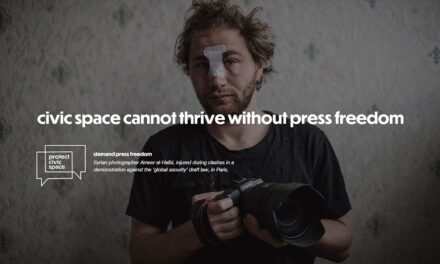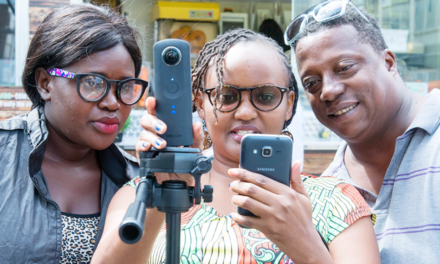
Where are the women?

“We need a daily paper edited and composed according to a woman’s own thoughts, and not as a woman thinks a man wants her to think and write. As it is now, the men who control the finances control the paper. As long as we occupy our present position we are mentally and morally in the power of the men who engineer the finances. Horace Greely once said that women ought not to expect the same pay for work that men received. He advised women to go down into New Jersey, buy a parcel of ground, and go to raising strawberries. Then when they came up to New York with their strawberries the men wouldn’t dare to offer them half price for their produce. I say, my journalistic sisters, that it is high time we were raising our own strawberries on our own land,” – Susan B. Anthony, May 23, 1893, World’s Congress of Representative Women.
When Susan B. Anthony made the above statement about 128 years ago, few would have imagined that a century plus later, the issues women in media were dealing with then, would still be present today, albeit in varied ways.
In the last 30 years since the Windhoek Declaration, has anything changed – from numbers of women in the media, numbers of women in media management to numbers of female sources in news stories?
Evidence from various sources point out that little has changed, progress has been slow and disappointing. From the Windhoek Declaration, 30 years ago to date, one can say that women representation in the media remains a matter of concern and critical for media transformation. African based and international campaigns continue to raise the issue of gender equality in media and in society in general, but the question now is what else can be done. Of importance to note is that international campaigns such as the #Metoo movement (with a follow-up in journalism by media personality, Zainab Salbi who had a show in 2018 on PBS called #MeToo, now What?), #HeforShe, #EndFGM, #TimesUp, #One and many others have re-energised calls for reduction of gender discrimination across various areas of life including the media.
Representation of women in the news worldwide
One of the latest media reports, “The Missing Perspectives of Women in News” by Luba Kassova released November 2020 provides trends in India, Kenya, Nigeria, South Africa, the UK, and the US that reveals both a mix of progress and lack of it in representation of women in the newsroom and as news sources. The report shows that “women’s representation in the news has flatlined (if not reversed) in the 21st century and that women are still marginalized in governance/leadership roles in news organizations”. In the six (6) countries that were analysed, “less than 1% of news stories cover gender equality issues. In 2019, women’s share of protagonists or of quoted experts/sources in the news was between 14% and 30% in the six countries”.
According to the said report, men still dominate management in news media organisations. It is however comforting to note that “South Africa is a global leader in gender parity in the newsroom (49% of journalists are women), followed by the UK (47%) and the US (42-45%). Gender diversity shows some improvement in Kenya (42% in 2015 vs. 35% in 2009) and in India (28% in 2019 vs. 19% in 20ll), but may be declining in Nigeria (24% in 2015 vs. 38% in 20ll).” South Africa also leads in terms of the proportion of women in senior leadership roles in news organizations (42% of top editors in 2020 are women). Nigeria lags significantly behind in terms of senior leadership, with just 4% of women occupying senior editorial roles in leading newspapers.
While the above statistics may seem to show a mix of progress and alack of it, a 20ll report by the International Women’s Media Foundation (IWMF) – Global Report on the Status of Women in News Media, published exactly 20 years after Windhoek Declaration might provide a different picture on what should be celebrated today. The report covering 59 nations, representing all regions of the world reviewed 522 media companies (79 of these in the Southern Africa region) indicates that only 33.3% (a third) of the full-time journalism workforce were women.
From the extensive research, some of the key results that might help inform the current situation in many regions, are indications that 73% of the media management and news gathering positions in media houses in the countries surveyed, were held by men while only 27% were held by women. However, the discrepancies were lower in some regions. For example, in Eastern Europe, the figures were 44% and 43% while in Nordic Europe, it was 36% and 37% respectively. The situation was worse in the Asia and Oceania regions where women were barely 13% of those in senior management.
In countries such as South Africa, women exceeded men in senior management level with at least 79.5%. The identified glass ceilings for women in 20 of 59 nations studied where most invisible barriers were found, was in middle and senior management levels. Of importance to note then was that “Slightly more than half of the companies surveyed [had] an established company-wide policy on gender equity. These ranged from 16% of companies surveyed in Eastern Europe to 69% in Western Europe and Sub-Saharan Africa.”
Fast forward to the current situation in newsrooms, a 2020 International Media Support (IMS report titled – “Women in Media – Balance the Imbalance”) shows discrepancies worth noting. Amongst others, the report shows that “Only 4% of all newspapers, radio and TV reports worldwide show gender balance in news stories, while only 24% of news subjects – (sources) are female. The report further explains that “only 19% of ‘experts’ used in the stories are women while only 16% of women are subjects in news that relates to politics and government.”
On the other hand, a 2019 McKinsey & Company report entitled “Shattering the glass screen”, showed that gender stereotypes still play a critical role in women getting leadership roles in the US. However, in the research McKinsey reveals that “women are better represented in media and entertainment than in other industries overall”. Though there are more women in media and entertainment at 49%, most of the women are concentrated in entry-level positions and these women in entry-level positions are not moving up the ladder in media and entertainment faster than men. In one of the questions asked, 35% of women compared to 15% men felt their gender hindered the advancement upwards in their profession while almost half of the women felt there are different standards used to judge them as compared to their male counterparts. When it came to issues of race, women of colour were found to be poorly represented across all levels in media and entertainment. Of importance to note was that at management level in news organisations, 44% of employees were women compared with other corporate organisations.
In the Southern Africa region, the statistics are both worrying and encouraging. Whereas there has been extensive progress in the news rooms and in the representation of women in the media, so much more needs to be done for the balance of ‘newsmakers’ and ‘news readers’ for real change to be felt. In the most recent SADC Gender Protocol Barometer (2018), a Gender Links report highlights amongst others that, while there is a paltry increase in women sources in the media from 17% in the 2003 Gender and Media Baseline Study (GMBS) to 20% in the 2015 GMMPS), the “region has seen an encouraging increase in the proportion of women in media management from 27% to 34%”. The report which is extensively based on monitoring, evaluation and results framework, further provides good news on the impact of the enrolment of more female students into journalism and media studies.
A key issue raised by Kassova (2020) is how patriarchy negatively impacts journalism, noting how, “patriarchal norms are at the heart of the existing invisible barriers for women in news” while “men are still in the driving seat in news media organizations. Women form a minority of leaders, governors and top managers in news organizations in each of the countries examined. Globally, 26% of governance roles in news organizations were held by women in 2011. When the governing structure of a news organization is dominated by men, even a gender-balanced newsroom continues to exhibit male biases”.
Most recently, in a Reuters Institute Oxford research based on Women and leadership in the news media 2021: evidence from 12 markets shows “only 22% of the 180 top editors across 240 global media brands are women. There was a 2% change in women top editors between 2020 and 2021. In 11 out of the 12 markets, the majority of the top editors are men. Again, there is positive news from South Africa where 62% of journalists and 60% of top editors are women.
Where to from here?
There has been progress worldwide in representation of women in the media as journalists, media managers and as sources. Africa has equally made some positive steps though a lot more still needs to be done. It is also important to celebrate and take lessons from success stories such as South Africa where there has been a huge jump in women in media management positions . There is equally a notable increase in the uptake of journalism studies by women. This however does not necessarily translate to an increase of women in newsrooms or managerial positions and that might be worth a research to identify the reason behind this discrepancy and advocacy actions pushing back on patriarchy are needed. Finally the overall societal attitudes to women in all facets of life need to change for a holistic change to be seen in the representation of women in media.
________
References
Beard, L, Dunn, J, Huang, J and Krivkovich, A (February 2020) Shattering the Glass Screen https://www.mckinsey.com/~/media/McKinsey/Industries/Technology%20Media%20and%20Telecommunications/Media%20and%20Entertainment/Our%20Insights/Shattering%20the%20glass%20screen/Shattering-the-glass-screen-vF.pdf?shouldIndex=false
Robertson, C. T, Selva, M and Nielsen, R.K (8 March 2021). Women and leadership in the news media 2021: evidence from 12 markets https://reutersinstitute.politics.ox.ac.uk/women-and-leadership-news-media-2021-evidence-12-markets
Byerly, C. M (2011) Global Report on the Status of Women in the News Media https://www.iwmf.org/resources/global-report-on-the-status-of-women-in-the-news-media/
International Media Support (March 2020) Women in Media: Balance the Imbalance https://www.mediasupport.org/publication/women-in-media-balance-the-imbalance/
Kassova, L. (November 2020) The Missing Perspectives of Women in News https://www.iwmf.org/wp-content/uploads/2020/11/2020.11.19-The-Missing-Perspectives-of-Women-in-News-FINAL-REPORT.pdf








